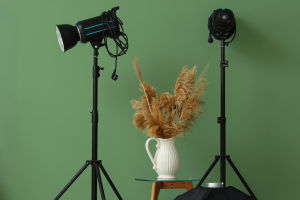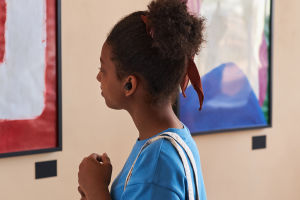Street photography is often referred to as the purest form of photography. Why? Because it allows us to capture life in its most raw and unposed state.
Street photographers don't stage their subjects; they simply observe and react. They capture those fleeting moments that reveal the depth of human experience and emotion, often without saying a single word.
If you've ever looked at a powerful street photograph and wondered how it was shot, you're not alone. The secret to great street photography is an intersection of technique, timing, and intuition.
In this article, we'll delve into the key skills and artistic choices that can help you capture those magical moments in urban life, where every corner is a potential canvas.
The Essentials of Street Photography
To start with, street photography isn't about fancy setups or controlled environments. It's about the ability to see beauty in the ordinary, the mundane, and sometimes even the chaotic. The streets are full of stories waiting to be told through your lens. But to capture those stories, you need to understand the core principles that guide great street photography.
1. Timing: The most important skill in street photography is timing. You need to be quick with your camera, ready to snap the perfect moment. Street photography is often about catching people mid-action—whether it's a fleeting expression, a gesture, or the perfect interplay between light and shadow. This often means predicting what's about to happen and being ready to capture it.
2. Composition: Like all forms of photography, composition is key in street photography. Think about framing your shot in a way that tells a story. Look for lines, shapes, and elements in the scene that help lead the viewer's eye toward the subject. The composition should highlight the human experience, whether through wide shots of bustling streets or tight, intimate portraits of individuals.
3. Lighting: The quality of light can transform a street photograph from average to extraordinary. Street photographers often shoot during the golden hours—just after sunrise or before sunset—when the natural light is soft and warm. This gives your photographs a beautiful glow that enhances the emotion of the scene. Alternatively, you can experiment with harsh sunlight to create dramatic contrasts or the moody ambiance of urban shadows.
Capturing Emotion in the Chaos
One of the most compelling aspects of street photography is its ability to convey raw emotion. A street photographer's job is to observe people and interactions, then capture the moment in a way that makes the viewer feel something.
Whether it's the joy of a child playing in the street, the sadness of a lone figure walking in the rain, or the excitement of a crowd at a concert, great street photos freeze a specific moment in time that speaks volumes.
But how do you catch these emotions amidst the chaos of the city? The key is in the anticipation. Great street photographers have a sixth sense when it comes to reading a scene. They notice body language, facial expressions, and the general mood of the environment. They know that an emotional moment often passes in the blink of an eye, and they are ready to capture it.
Moreover, sometimes emotions are not as obvious as they seem. It could be the way someone holds a loved one's hand, the solitary figure against a busy backdrop, or even just a glance exchanged between strangers. Look for moments that suggest a deeper connection or tell a story beyond what's visible at first glance.
The Art of Candidness: Staying Invisible
In street photography, the art of candidness is vital. Unlike portrait photography, where the subject is usually aware of the camera, street photography thrives on the authenticity of unposed, spontaneous moments. This means you need to be almost invisible—both physically and in your approach.
Many street photographers prefer to use small, discreet cameras to avoid drawing attention to themselves. Larger cameras can be intimidating to people on the street, and they can alter the natural flow of the scene. The goal is to blend into your surroundings, to become a part of the environment, and to shoot without disturbing the moment.
However, this doesn't mean you should avoid people altogether. Sometimes, interaction can create an interesting dynamic, especially if you're capturing a social or cultural context. Just be mindful of the ethics of photography—if you feel that a person's privacy is being compromised, it's always best to ask for permission or take a more respectful approach.
Storytelling Through Street Photography
Street photography isn't just about capturing a pretty picture—it's about telling a story. Each shot is a window into the lives of the people you're photographing, and as a photographer, you are the storyteller. To tell a compelling story, you need to pay attention to the details.
Sometimes it's the little things—the graffiti on the wall, the trash on the street, or the way the light hits a specific object—that make the scene feel real and relatable.
Urban environments are teeming with stories. A single photograph can capture the rhythm of city life, the cultural diversity, or the hustle and bustle of daily existence. By looking for contrasts, such as old vs. new, rich vs. poor, or calm vs. chaotic, you can create narratives that reflect the complexities of the modern world.
Conclusion: The Art of Observation
At its core, street photography is about observation. It's about being present in the moment, noticing the details, and reacting to what's happening around you. By using your camera as a tool to observe the world, you can create images that capture the heart and soul of city life, filled with raw emotion and stories.
As you venture out into the streets with your camera, remember that every corner offers a new opportunity. Whether it's a quiet, intimate moment or a loud, chaotic scene, each photograph you take adds to the rich tapestry of life that unfolds around us.
So next time you head out with your camera, don't just look at what's in front of you. Observe, feel, and capture the heartbeat of the city. There's always a moment waiting to be frozen in time.


